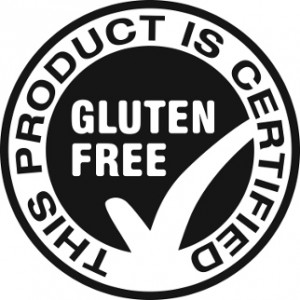 In an effect to crack down on food companies making wrongful, inaccurate claims, the Federal Drug Administration (FDA) recently passed a new labeling standard for foods, beverages, condiments and other products touting the gluten-free label. While labeling is completely voluntary, all products containing it must possess 20 parts-per-million of gluten or less; otherwise, they are subject to fines and/or forced recall.
In an effect to crack down on food companies making wrongful, inaccurate claims, the Federal Drug Administration (FDA) recently passed a new labeling standard for foods, beverages, condiments and other products touting the gluten-free label. While labeling is completely voluntary, all products containing it must possess 20 parts-per-million of gluten or less; otherwise, they are subject to fines and/or forced recall.
The FDA first proposed a gluten-free standard last year, citing the need for greater regulation in this ever-expanding market. At the time, food companies were slapping gluten-free labels on their products for the sole purpose of attracting more customers, and subsequently more sales. Unfortunately, this led to a number of incidents in which people with celiac disease and other forms of gluten intolerance consumed gluten.
The good news is that the FDA’s new gluten-free labeling standard has officially taken effect. As of August 5, 2014, all food and beverage products touting the gluten-free label must meet the FDA’s criteria. The FDA defines gluten ingredients as any gluten-based grain, such as spelt, wheat or rye, or a compound derived from a gluten-based grain, such as flour. Products must possess less than 20 ppm of gluten or less.
The FDA published the following on its website in regards to the new gluten-free labeling standard:
“In general, foods may be labeled “gluten-free” if they meet the definition and otherwise comply with the final rule’s requirements. More specifically, the final rule defines “gluten-free” as meaning that the food either is inherently gluten free; or does not contain an ingredient that is: 1) a gluten-containing grain (e.g., spelt wheat); 2) derived from a gluten-containing grain that has not been processed to remove gluten (e.g., wheat flour); or 3) derived from a gluten-containing grain that has been processed to remove gluten (e.g., wheat starch), if the use of that ingredient results in the presence of 20 parts per million (ppm) or more gluten in the food. Also, any unavoidable presence of gluten in the food must be less than 20 ppm.”
Why is the FDA pushing for greater regulation in the gluten-free food and beverage market? One reason is simply that celiac disease is becoming more common, and in order to protect the health and well-being of individuals with this disease, products must be appropriately labeled. It’s important to note, however, that labeling is strictly voluntary, meaning companies are in no way forced to display the gluten-free label.
